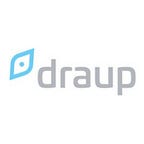A Lack of Career Development is Causing Employees to Quit in Droves
Despite being the cornerstone of modern talent management, employers are severely lacking when it comes to fostering career development pathways within their organization.
Pre-pandemic, this was something that was rarely addressed and often just swept under the rugs. It was also something that was 100% the employee’s responsibility.
But with employees rethinking their career aspirations & goals and re-evaluation their work-life preference, they are now holding HR equally responsible for their career evolution. It has become evident that moving up the career ladder is a collaborative effort that requires not just hard work and determination from the worker but also motivation & support from the company.
As a result, today’s job seekers would rather work for a company that offers them well-laid-out career progression maps as opposed to one that completely puts the onus of career development on the employee.
Let us examine how companies are adjusting to this new reality.
The Changing Talent Landscape Powered By Gen Z
Strategies to attract Gen Z talent eager to build a sustainable career must begin right at the talent acquisition stages. This breed of early-career talent with less than three years of professional experience under their belt is the fastest growing talent pool in the world today.
So, it makes sense to tailor your talent acquisition strategies to meet their demands.
A key question that this cohort asks is “What opportunities are there for me to advance within the company?” and “How will the company help me get there?”
The first question has been standard for a while now. But even seasoned HR professionals are slightly offended to hear the second one.
This talent pool actively demands that the company also play an active role in their career development. And for their part, most companies do have thriving learning & development pathways. So it makes sense for talent acquisition teams to tailor their strategies to include this information right from the beginning.
However, it goes much beyond offering them with cookie-cutter online learning modules.
“Do you have a mentorship policy in your company?”
“Will I be offered custom learning pathways to match with evolving market conditions?”
These are just a few of the questions interviewers are struggling to answer when hiring for in-demand roles.
Is your talent acquisition team equipped to answer these questions?
And how are you planning to attract Gen Z talent who give great importance to career progression?
Career Development gets an AI-powered boost
Let’s address the demands of Gen Z one by one.
The first is that they are given active on-the-job mentorship. Thankfully, this has been such long-pending feedback that some companies have actively started to implement it.
In fact, mentorship plays a crucial role when it comes to building a diverse & inclusive workforce.
Mothers who return to work after a gap might experience gaps in their knowledge. Veterans entering the workforce might feel out of place. A person from a sexual minority might feel uncomfortable in your workplace.
All of these issues can be solved with smartly implemented mentorship programs.
The second demand is that they be equipped with the right environment to flourish and enhance their skillset.
To do this, companies have relied on providing them access to e-learning modules. Years of research has indicated that only ~17% of those who enroll for these modules end up completing them.
And even among them, a minuscule go on to work on related technologies.
HR teams now realize the disadvantage of this method. More & more enterprises are eager to implement customized learning pathways that play to the advantages of an employee and helps them develop their career.
A recent innovation in this sector is that of AI-powered reskilling/upskilling solutions.
These solutions empower talent teams with a detailed reskilling framework that arms them with insights on:
- Disrupted job roles and their skills breakdown
- Identifying suitable roles that the disrupted roles can be transitioned to
- Skills gap analysis between the starting and desired role
- Analysis of feasible transitions based on relevant reskilling parameters
- Selection of suitable learning modules to bridge the skills gap
Reskilling solutions such as Draup bank on information regarding 4500+ roles, over 30,000 skills and have analyzed over 150 Million job descriptions to help organizations implement sustainable reskilling/upskilling strategies.
Armed with such robust reskilling & talent intelligence solutions, interviewers can now confidently answer Gen Z talent, “Yes, we can empower your career progression plans.”
